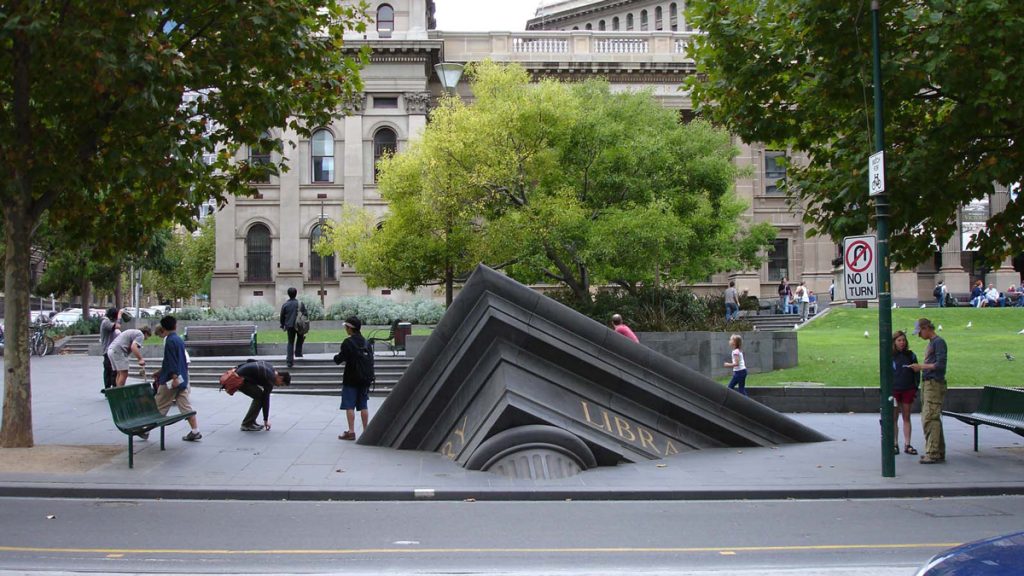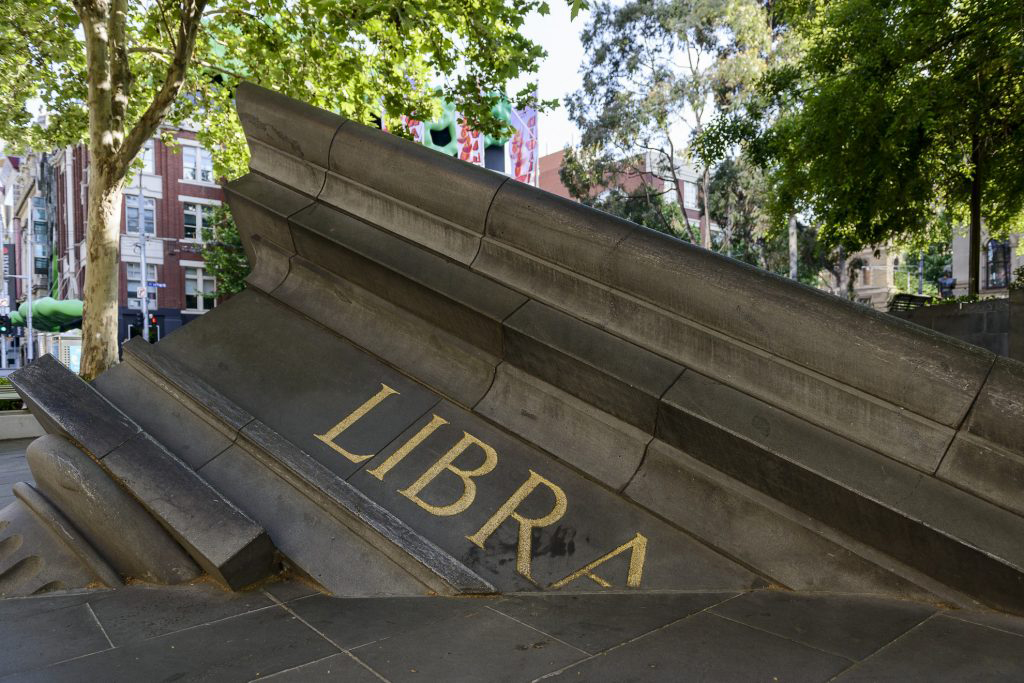Introduction

Architectural Fragment is a sculpture located in front of the State Library of Victoria in Melbourne, Australia, created by sculptor Petrus Spronk. This sculpture appears to be buried underground, symbolizing the collapse of civilization and also reflecting the fleeting passage of the present. This sculpture is part of a large-scale public art project commissioned by the Melbourne City Government in 1992. This article will provide an in-depth introduction to the history, artist, symbolic significance, and special position of this sculpture in the minds of the audience.
The History of Sculpture
The creation of the ‘Architectural Fragment’ sculpture can be traced back to 1992, when the Melbourne City Government launched an important public art project aimed at enriching the city’s cultural landscape and promoting the integration of art and urban space. In this project, Petrus Planck was selected to create a sculpture that will be placed on an open space in front of the Victoria National Library.
Petrus Planck is a famous Australian sculptor known for his unique use of materials and profound contemplation of human experience. He often explores themes such as time, memory, and history in his creations, which are fully reflected in the sculpture of “architectural fragments”.
The Appearance of Sculpture

The appearance of the ‘building fragments’ sculpture matches its name, and it looks like a remnant of an ancient building buried underground. The sculpture is made of concrete, presenting a natural stone texture on the surface. This material selection adds an ancient atmosphere to the sculpture.
The sculpture presents a unique shape, resembling a huge building stone, partially buried underground, with only a portion of the ground exposed. This design reminds people of the ruins of ancient civilization, but also implies the passage and changes of time.
Symbolism and Interpretation
The sculpture of “architectural fragment” has profound symbolic significance, and it triggers the audience’s thinking on multiple levels. Firstly, the underground part of the sculpture seems to imply the collapse and disappearance of civilization. This is a review of history, reminding people that everything has a never-ending cycle, and that the rise and fall of civilization are inevitable.
Secondly, sculpture also conveys the fleeting passage of reality. The sense of incompleteness between the ground and underground parts symbolizes the blurry boundary between reality and illusion. It reminds people that everything in the present is fleeting, time is constantly passing, and people should cherish every moment.
This sculpture is also related to literature and history, and can be interpreted as a tribute to ancient literature and knowledge. Located in front of the Victoria National Library, it combines culture and knowledge with sculpture, emphasizing the importance of civilization and knowledge.

Investment from Melbourne City Government
The Melbourne City Government has commissioned Petros Planck to create the sculpture of “architectural fragment”, which is one of the important investments of the city in the field of public art. Public art not only enriches the cultural atmosphere of a city, but also provides an opportunity for citizens and tourists to interact with art. Melbourne has always been the cultural center of Australia, and the existence of this sculpture further strengthens this position.
Triggering Thinking and Exploration
The sculpture of “architectural fragment” has sparked people’s thinking and exploration. It encourages people to reflect on the rise and fall of civilization, the passage of time, and the relationship between reality and illusion. The existence of sculpture provides Melbourne citizens and tourists with the opportunity to delve into these abstract themes, interact with art, and thus enrich the cultural life of the city.

Epilogue
The ‘Architectural Fragment’ sculpture is a symbolic artwork located in front of the Victoria National Library in Melbourne, Australia. It triggers people’s thinking through its unique appearance and profound themes, symbolizing the collapse of civilization and the fleeting passage of reality. This sculpture is part of the Melbourne City Government’s public art project, enriching the city’s cultural landscape, providing opportunities for citizens and tourists to interact with art, and also becoming a symbol of the city. It brings the audience into a space of reflection and contemplation, inspiring them to deeply contemplate time, history, and the meaning of life.

